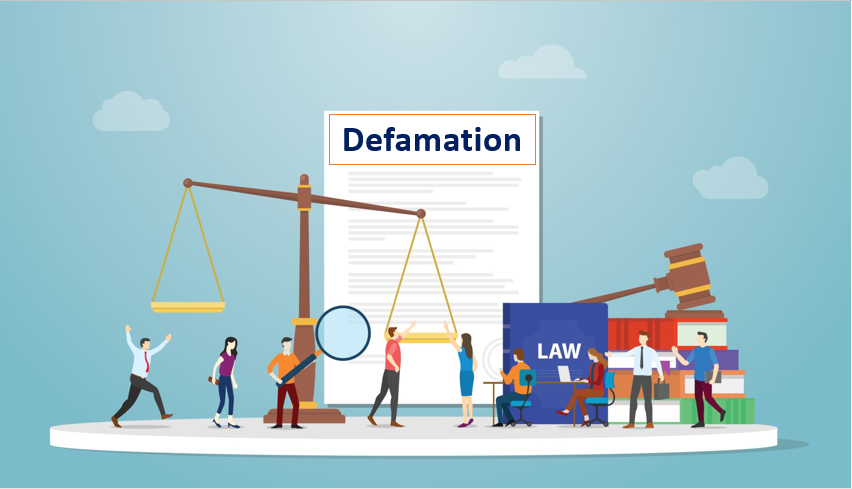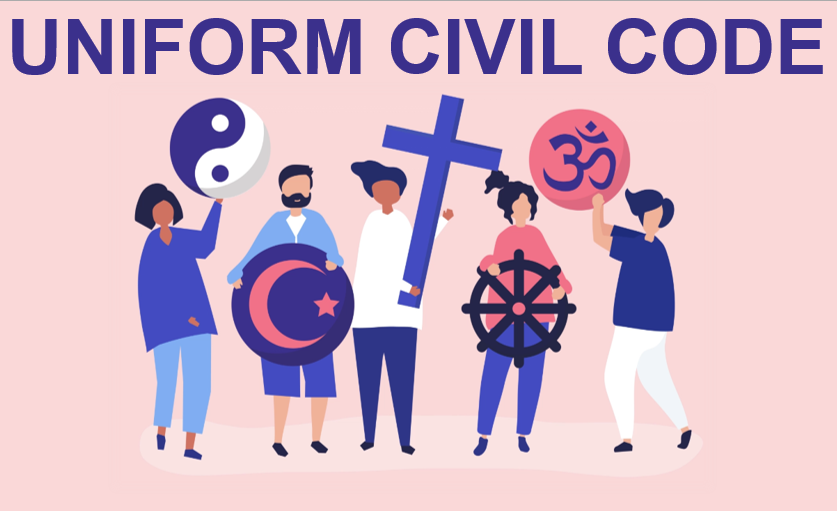Published on 13th April 2025
Authored By: Sahasra Reddy
IFHE Hyderabad
INTRODUCTION
Death penalty is one of the six punishments used in India and is also known as the capital punishment. It is the most severe form of punishment given in the legal system and it is executed by putting the convicted person to death. In most of the countries the death penalty has been abolished, while recognizing that it has no place in a democratic and civilized society. But India is among those countries which still upholds the death penalty. In India its said that “Life imprisonment is a rule and a death penalty is an exception”. The Judiciary of India has also held the “Rarest of the Rare Cases” Doctrine which states that death sentence or penalty should be awarded only in exceptional cases wherein life imprisonment is insufficient to deliver justice.
This article provides an overview of what a death penalty is and discusses about its evolution through various judgements and also the present status of it.
HISTORICAL BACKGROUND
Capital punishment has been here since the inception of the state. It has been practiced in India for centuries and it has been deeply rooted in its social and cultural history. The concept of death punishment was present from the ancient and medieval period in the Ancient Indian Texts of
Dharmashastra and Arthashastra wherein they prescribed death penalty for serious offences. In Manusmriti, one of the earliest law texts, capital punishment was deemed necessary for maintaining social harmony. Manu, the author of the text, argued that severe punishments, including death, were essential for deterring individuals from committing grievous crimes.
The Indian Penal Code came into existence in 1860 during the colonial period. The IPC provided and codified the death penalty for a range of offences, including murder, waging war against the state, and treason. During the British era, capital punishment was widely used as a tool to suppress dissent and control the population. After Independence the Republic of India inherited the IPC, 1860. However, the framers of the Constitution did not abolish the death penalty outright, leaving it to be regulated by the judiciary. In the subsequent years, there have been ongoing debates about the abolition of the death penalty in India. Public opinion and legal experts have been divided on the issue, with arguments both in favour of its retention as a deterrent and as a form of retribution, and arguments against it on grounds of human rights, the risk of wrongful convictions, and the lack of conclusive evidence proving its deterrence value. The 2012 Nirbhaya gang rape case triggered widespread protests and discussions about the efficacy of the death penalty as a deterrent.
Tabled in the Parliament in August, the BNS – Bharatiya Nyaya Sanhita 2023 (BNS) is slated to replace the existing Indian Penal Code (IPC, 1860) on the grounds of contemporizing the issues of punishment and justice. However, besides continuing with the crimes that already attract death sentence in the existing IPC, the BNS has introduced four new offences which are punishable by death, namely- gang rape of a woman under 18 (Clause 70(2)), murder by a mob (Clause 101(2)), Organized Crime (Clause 109), Offence of a Terrorist Act (Clause 111).
LEGAL FRAMEWORK
Crimes under which the Death penalty is punishable as per the BNS, 2023 is as follows:
- Crimes Against Persons
- Murder: Punishable by death under Section 103(1).
- Rape on Woman Under 12 Years: Punishable by death under Section 65(2).
- Rape Causing Death or Resulting in Persistent Vegetative State of Victim: Punishable by death under Section 66.
- Gang Rape with Woman Below 18 Years: Punishable by death under Section 70(2).
- Repeat Offenders of Rape: Punishable by death as per provisions related to aggravated rape.
- Mob Violence and Lynching
- Mob Lynching: Punishable by death when murder is committed by five or more persons based on identity markers under Section 101(2).
- Crimes by Convicts
- Murder by Life Convict: Punishable by death if committed while serving a life sentence under provisions related to murder.
- Attempt to Murder by Person Serving Life Imprisonment: Punishable by death under Section 109.
- Organized Crime and Terrorism
- Organized Crime Resulting in Death of a Person: Punishable by death under Section 111(2)(a).
- Terrorist Act Resulting in Death of a Person: Punishable by death as specified in the relevant provisions for terrorist acts.
- Crimes Against the State and Justice
- Waging/Attempting/Abetting War Against Government of India: Punishable with death under Section 147.
- Abetment to Commit Mutiny: Punishable by death as per relevant sections on mutiny.
- Giving False Evidence Leading to Conviction/Execution of Innocent Person: Punishable by death under provisions concerning false evidence.
- Kidnapping/Abduction to Kill/for Ransom: Punishable by death under provisions related to kidnapping and abduction, specifically under Sections 140(2).
PROCEDURE OF CARRYING IT OUT/ EXECUTION OF DEATH PENALTY
The Execution of Death penalty in India is carried out in two modes they are explained as follows:
- HANGING: This type of execution has been prevalent since the ancient times and the British times and it has been continued along till now. As per section 393(5) of the Bharatiya Nagarik Suraksha Sanhita, 2023 (BNSS), 2023 When any person is sentenced to death, the sentence shall direct that he be hanged by the neck till he is dead.
- SHOOTING: While hanging is the primary mode of civilian executions, army or militaria executions are done via shooting in India. It is provided under The Air Force Act, 1950, The Army Act, 1950 and The Navy Act, 1957 that the execution has to be carried out either by hanging by neck till death or by being shot to death. It was believed that the form of the shooting a condemned man necessarily involves less agony as that in the case of the hanging where there is procedure as to weighting, measuring of the height, etc.
WHO ARE EXCLUDED?
- Minor: A person who is under 18 years of age is a minor and such person is excluded from the death penalty if he/she was a minor during the commission of the offence. This is because the court believes that they have yet to become an adult and they have scope of improvement and can realize their mistakes when given the right environment and education.
- Pregnant Women: A pregnant woman cannot be sentenced to death penalty. As per Section 456 of the BNSS, 2023 If a woman sentenced to death is found to be pregnant, the High Court shall commute the sentence to imprisonment for life.
- Intellectually Disabled: A person who is unable to understand the nature and the consequences of his actions during the commission of the offense is known as an Intellectually Disabled person or a person of unsound mind. They are excluded from death penalty as per the Indian Law.
MAIN JUDGEMENTS SHAPING ITS EVOLUTION
The following are the main judgements which shaped the position of death penalty in India.
In the case of Jagmohan Singh v. State of UP AIR 1973 SC 947 the constitutionality of the death penalty was challenged by stating that death punishment is unnecessary, cruel, inhumane and degrading treatment and the punishment of death sentence does not serve the purpose of deference. It was held to be Constitutional as it’s a Procedure established by law.
Later in the case of Rajendra prasad vs State of Uttar Pradesh AIR 1979 SC 916 the court in this case comprehensively discussed the meaning of ‘special reasons’ for imposing the death sentence on exceptional grounds. It was held that the ‘special reasons’ required to impose Capital punishment must not relate to the crime but the focus must be on the criminal and the circumstances.
In the case of Bachan Singh vs State of Punjab AIR 1980 SC 898 the concept of rarest of rare case way developed. The judges have choice between life imprisonment and death sentence – must award death penalty as an exception. ‘Death sentence’ must be related to circumstance of the criminal and not the crime itself. Every punitive action must satisfy the test of reasonableness. The weight has to be given both to aggravating and mitigating circumstance prior to the stating of special reasons. The death sentence can only be imposed ‘in the rarest of rare cases when the alternative option is unquestionable foreclosed’ was what was held by the court.
WHAT IS A RAREST OF RARE CASES?
In the case of Macchi Singh v State of Punjab, AIR 1983 SC 1957 The court analyzed the Bachan
Singh case in this case – reemphasized Two Questions
- Firstly, is the offence committed so exceptional that there is no scope for awarding any other sentence?
- Secondly, even when weightage is accorded to the mitigating circumstances does the circumstances still warrants death penalty?
The court in this judgement held that the death penalty can only be imposed if the following conditions are met:
- Manner commission of murder
- Motive for the commission of murder
- Socially abhorrent nature of the crime
- Magnitude of the crime
- Personality of victim of murder
CASES RAREST OF RARE CASE
→ State v Jasbir Singh, 17 (1980) DLT 404-murder of two children after kidnapping. The manner of commission is seen here. Hence court held, it comes under rarest of the rare cases. The Accused was convicted with death penalty.
→ Kehar Singh v. State of Punjab, 1988 SCR Supl (2) 24-Indira Gandhi murder case. The Personality of the Victim is stated in this case and its coming under the mitigating circumstances. Hence it comes under rarest of rare case. The Accused was convicted with death penalty.
PROS
- It serves as a powerful deterrence to potential perpetrators.
- It is more cost efficient than maintaining a criminal for his lifetime in the prison.
- It helps give closure to the victim’s family.
CONS
- It has a risk of wrongful convictions wherein the innocent is put to death.
- It violates the fundamental rights such as Article 21 of the Indian Constitution.
- It is inhumane.
- It violates the rights of the people.
PRESENT STATUS OF DEATH PENALTY IN INDIA.
As per the eighth edition of the Death Penalty in India: Annual Statistics Report At the end of 2023, 120 death sentences were imposed by trial courts and 561 prisoners were living under a sentence of death in India. According to the National Crime Record Bureau’s Prison Statistics Reports, 2023 will have the second-largest number of death row inmates since the turn of the century and the greatest number in over 20 years. The number of people on death row has grown over time, and in 2023, it will be the third year in a row with the greatest number since 2004. The year 2023 also witnesses a 45.71% increase in the death row population since 2015. The increase in the death row population was mainly due to the delay in the disposal of cases by the High court. Significantly, 2023 marks the lowest rate of death sentence confirmations by the appellate courts since the year 2000, with only one death sentence being confirmed by the Karnataka High Court in a murder simpliciter case.
Forty years after hanging was upheld by the Supreme Court in Deena v. Union of India (1983), the court considered a writ petition in March 2023 contesting the validity of hanging as a means of execution. The State was ordered by the Court to establish an expert group to investigate more humane and constitutionally compliant execution techniques. Also in the year of 2023, the Indian Penal Code 1860 was repealed and was replaced by the Bhartiya Nyaya Sanhitha 2023 wherein the number of crimes which are punishable by death penalty was increased.
CONCLUSION
The death penalty is a highly debated and discussed topic. The recent statistics and changes have brought up even more controversies and ongoing debates about its morality and effectiveness. Ultimately, the future of the death penalty in India hinges on balancing justice, public sentiment, and evolving societal values regarding human rights.
REFERENCES
- Agrawal, A. (2025) History of capital punishment in India, Law Bhoomi. Available at: https://lawbhoomi.com/history-of-capital-punishment-inindia/#Ancient_India_and_the_Concept_of_Punishment (Accessed: 06 January 2025).
- (No date a) Ijfmr. Available at: https://ijfmr.com/papers/2023/4/5525.pdf (Accessed: 07 January 2025).
- People’s Union for Democratic Rights (no date) Peoples Union for Democratic Rights. Available at: https://www.pudr.org/press-statements/review-death-penalty-punishments-inbhartiya-nyaya-sanhita-2023/ (Accessed: 08 January 2025).
- (No date a) Report on execution of death sentence. Available at: https://cdnbbsr.s3waas.gov.in/s3ca0daec69b5adc880fb464895726dbdf/uploads/2023/01/20 23010583-1.pdf (Accessed: 10 January 2025).
- (No date a) Squarespace. Available at: https://static1.squarespace.com/static/5a843a9a9f07f5ccd61685f3/t/65c4dc6e358e487887 b16487/1707400313275/Annual+Statistics+2023+-+Digital+Copy.pdf (Accessed: 10 January 2025).


